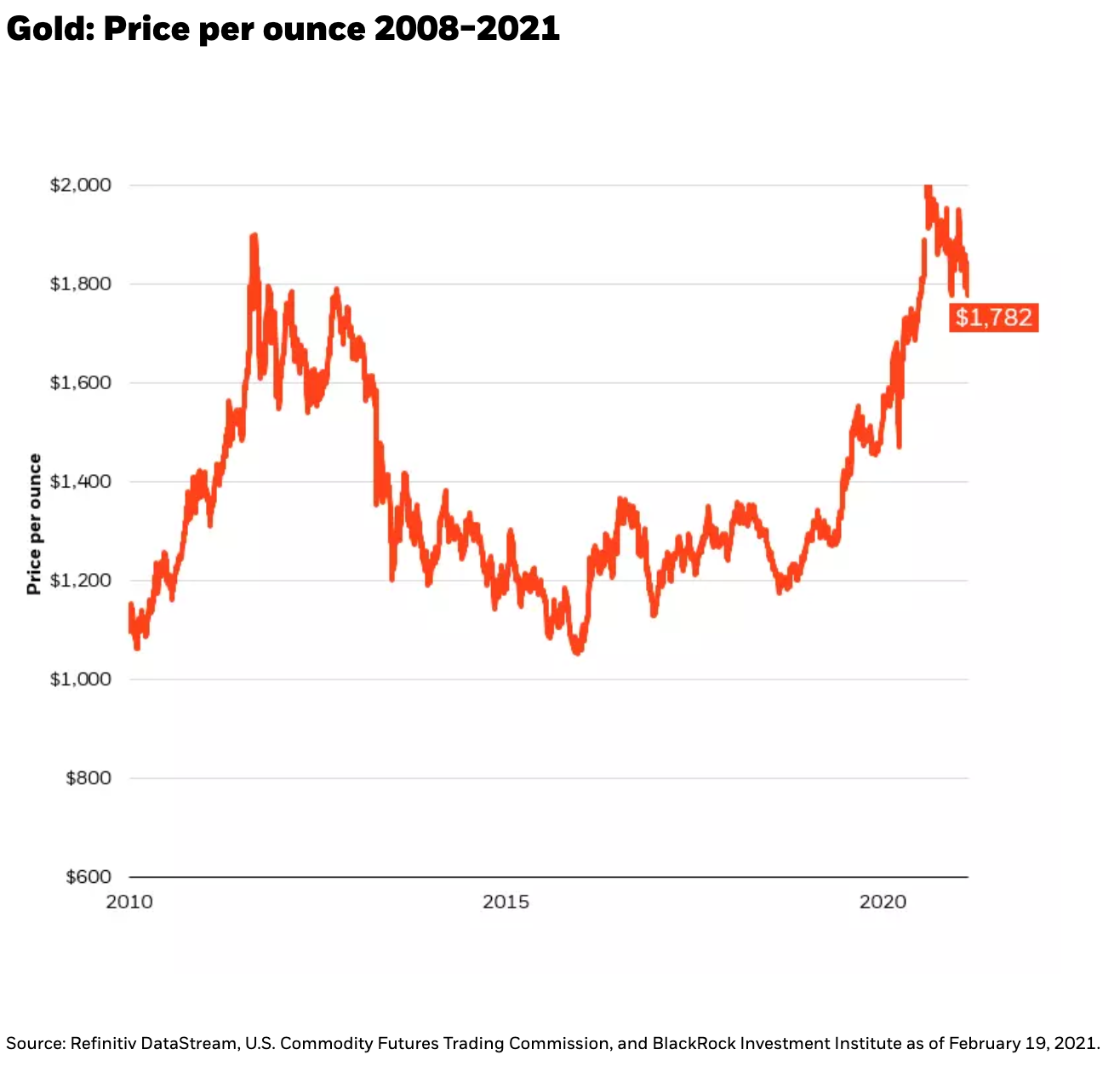by Russ Koesterich, Portfolio Manager, CFA, JD, Blackrock
Russ discusses why gold has not been an effective hedge recently.
One of the stranger aspects of this market is the ease of finding returns and the impossibility of finding hedges. As most risky assets continue to grind higher, it is increasingly difficult to find assets moving in the other direction. In recent blogs I’ve highlighted the declining efficacy of bonds as a hedge. Gold should be added to that list.
Back in October I highlighted how gold, which at times can be an efficient portfolio hedge, was increasingly trading with stocks. Since then gold has struggled, both in price terms and as a hedge.
During the past three months gold has declined by roughly 5% (see Chart 1). The yellow metal has struggled as real yields, i.e. interest rates after inflation, rose from historic lows. Since January, real 10-year yields have risen by around 15 basis points (bps); consistent with history this has proved a headwind for gold.
Gold’s underperformance might be more tolerable for investors, except for the fact that it has also been failing as an equity hedge. Gold continues to trade with a positive correlation and beta to equity prices. Looking at weekly data, gold has been rising roughly 0.20% for every one percentage point rise in the S&P 500. True, that still represents a gap in performance, but from a portfolio construction standpoint, it means gold is a less effective hedge.
This positive relationship with risky assets is even stronger when comparing gold to high growth tech stocks. Based on weekly data, since the end of September gold’s correlation with U.S. tech companies has been approximately 0.5. Put differently, gold and tech are increasingly moving in tandem.
Not your inflation hedge
Gold’s lackluster performance and rising correlation with stocks might still be forgiven if it were fulfilling another role: inflation hedge. Unfortunately, gold’s ability to hedge against inflation has been somewhat exaggerated. While it is a reasonable store of value over the very long-term, think centuries, it is less reliable across most investment horizons, including the most recent period. Although inflation break-evens, derived from Treasury Inflation Protected Securities (TIPS), have been steadily rising, gold has demonstrated little correlation with daily or weekly moves.
For investors re-examining their gold position, I’d consider two factors: real rates and views on the dollar. More stimulus and improving vaccine distribution suggest the possibility of an economic surge. Should this happen, real rates are likely to continue to rise from still historically depressed levels. As has been the case the past month, this will likely prove a headwind for gold.
What would cause gold to start working? Probably a decline or collapse in the dollar. While gold’s recent correlation with stocks and inflation has been positive to effectively zero, it is still demonstrating a strong, negative relationship with the dollar. For this reason, gold should probably still be thought of as a dollar hedge. Absent a strong view on a declining dollar, I would own less gold. And for those investors still looking for a hedge, one word: cash.
Copyright © Blackrock















